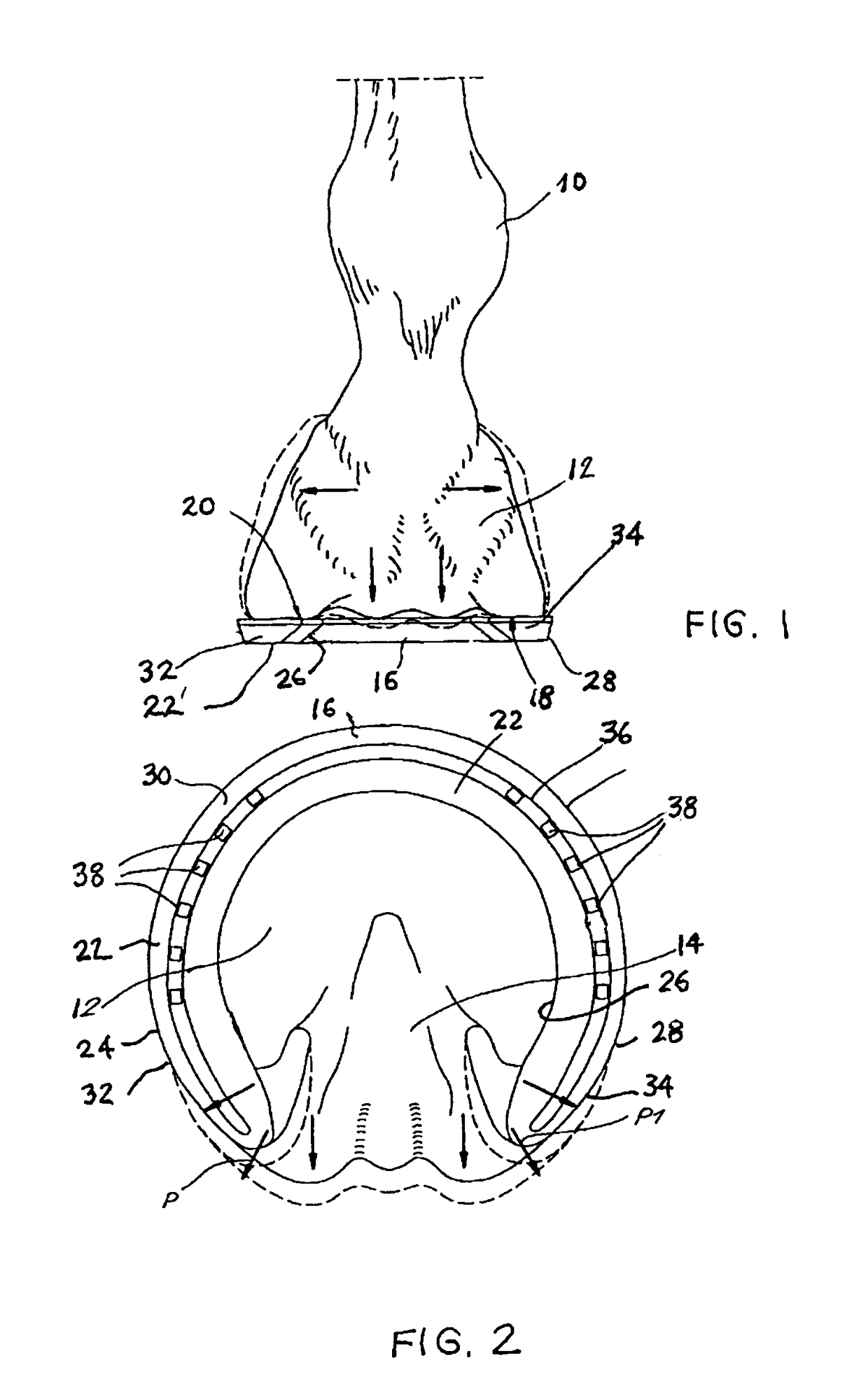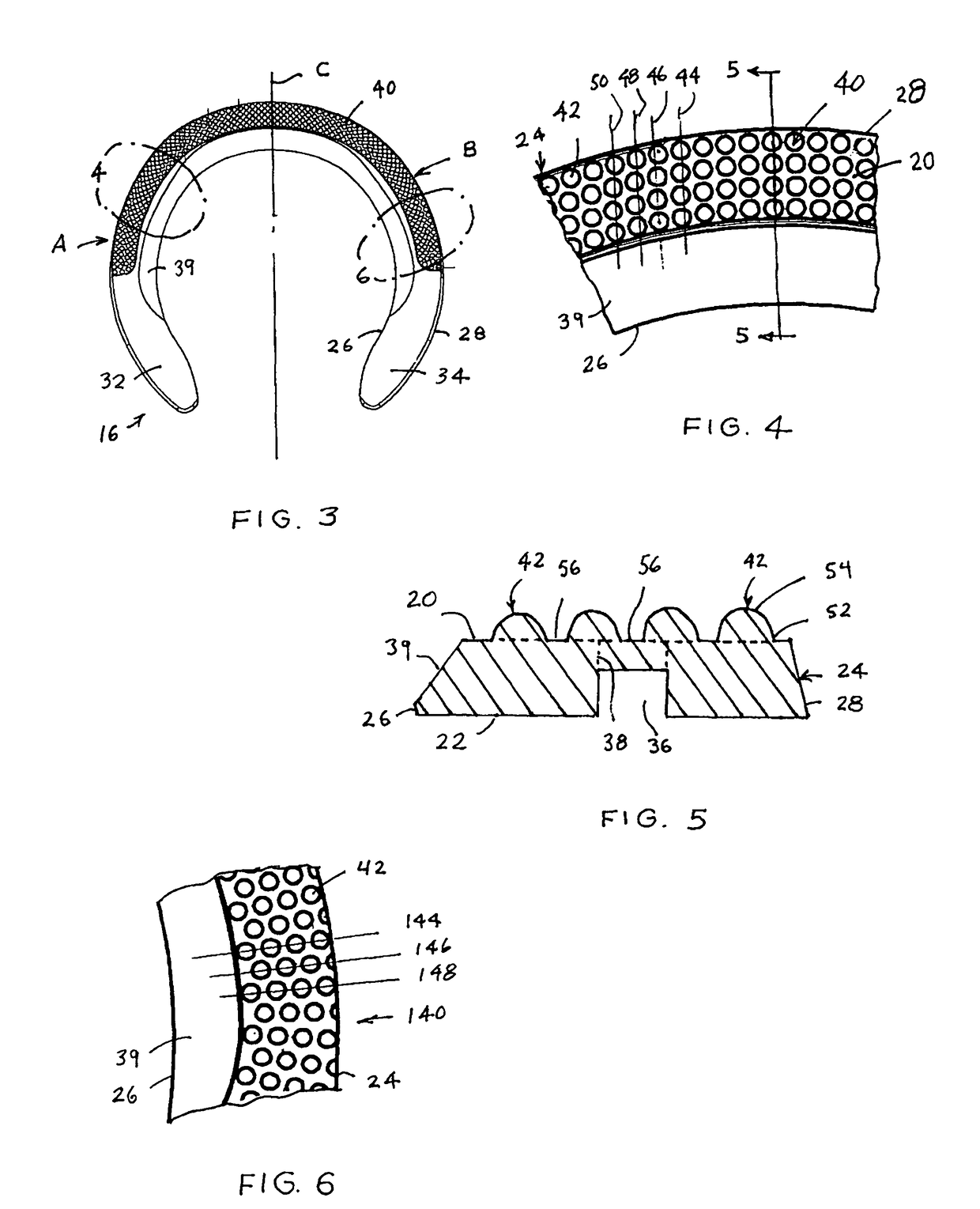Horseshoe
a technology for horses and shoes, applied in the field of horseshoes, can solve the problems of inhibiting the formation of healthy hoofs, hampering the blood circulation of feet, and sore feet of horses, so as to reduce the stress of shearing, inhibit relative movement, and reduce the effect of pain
- Summary
- Abstract
- Description
- Claims
- Application Information
AI Technical Summary
Benefits of technology
Problems solved by technology
Method used
Image
Examples
Embodiment Construction
[0037]Turning now to the drawings, FIGS. 1 and 2 illustrate a leg 10 with a hoof 12 of a hoofed animal, a hoof mechanism indicated at 14, and a horseshoe 16 attached to the sole 18 of the hoof 12, the circumference of which horseshoe 16 follows the circumference of the sole 18. The hoof mechanism is discussed in greater detail in the Kerckhaert patent. The horseshoe 16 includes an upper surface 20, which is fixed, in use, against the bottom surface or sole 18 and a lower surface 22, adapted to engage the ground. The surfaces 20 and 22 are generally planar and in parallel spaced relation to one another.
[0038]Further the horseshoe 16 comprises a rigid U-shaped body 24 with inner and outer faces 26 and 28 extending vertically between the upper and lower surfaces 20 and 22, a forward closed end toe section 30 and a pair of legs 32 and 34 extending rearwardly from the toe section. The ground engaging lower surface 22 is provided with a continuous groove or channel 36 and the horseshoe bo...
PUM
 Login to View More
Login to View More Abstract
Description
Claims
Application Information
 Login to View More
Login to View More - R&D
- Intellectual Property
- Life Sciences
- Materials
- Tech Scout
- Unparalleled Data Quality
- Higher Quality Content
- 60% Fewer Hallucinations
Browse by: Latest US Patents, China's latest patents, Technical Efficacy Thesaurus, Application Domain, Technology Topic, Popular Technical Reports.
© 2025 PatSnap. All rights reserved.Legal|Privacy policy|Modern Slavery Act Transparency Statement|Sitemap|About US| Contact US: help@patsnap.com


